


| The 3rd grade (nine year old) art/color class went very well. They used the 3 primary colors, transparent yellow, magenta and cyan to make colored water, cleaned their brushes between colors and never left the brush setting in the water. Then they mixed the primary colored waters together to make the secondary colors They learned how to recognize colors that were off and correct them. Then they made black, gray and brown water from each color.
These children fully understood how to mix any color in front of them. We than painted what we saw on location. The water color paints we used were made from my plotter's printing inks by adding 1 gum arabic and 1 honey and 1 soap. We didn't need the soap so I dropped it from the media. |
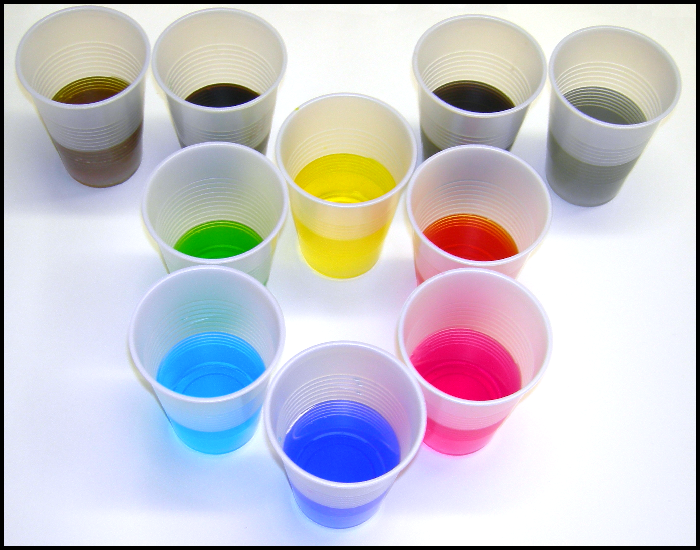 |
|
|
|
Orion is very prolific and good. Fifteen minutes or more of drawing/painting everyday day will make a great artist of you quickly, like Masaccio.
Quote from color course; http://www.realcolorwheel.com/final.htm 1400, Tomaso Masaccio, 1401-1428, Florence. The brightest shooting star that ever was. The first artist to reach the "high art" of painting for over a thousand years, others would not be far behind but he would never see them, he died when he was twenty seven. Masaccio had a new conception of reality, life wasn't staged in his fresco, it was happening! Macalangelo, by age 25 had created the Piet statue in the Saint Peter's Basilica. Probably the best know sculpture in the world. |
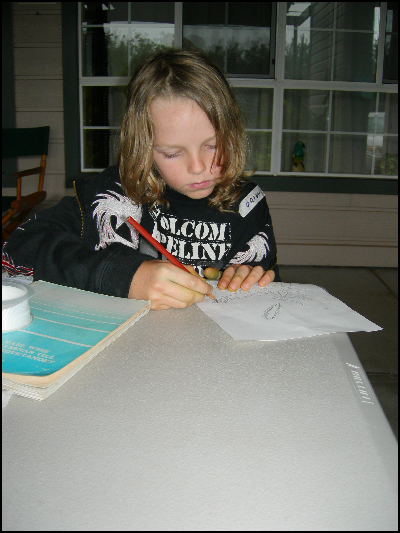
|
| First Orion drew the palm tree with it's spiraling vines moving up through the shade/rain tarp above.
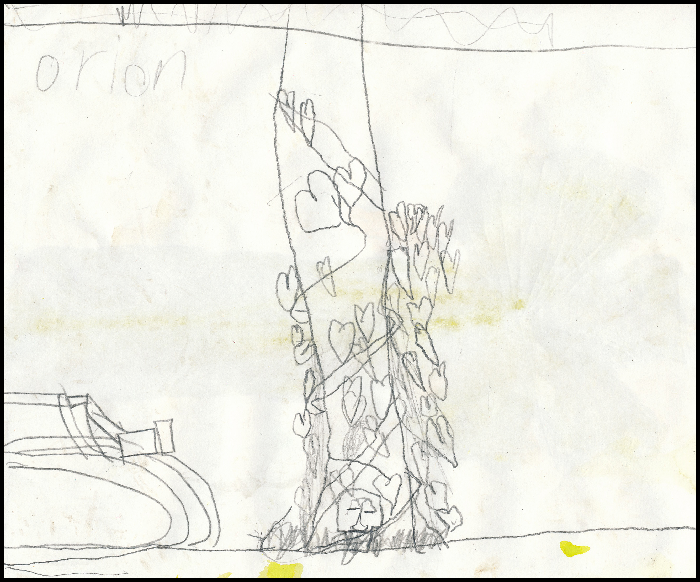
|
| On the other side of the paper he painted the top half of the palm. His colors are bold and true. Look at that brown and greens and yellows. He learned to use primary colors quickly.
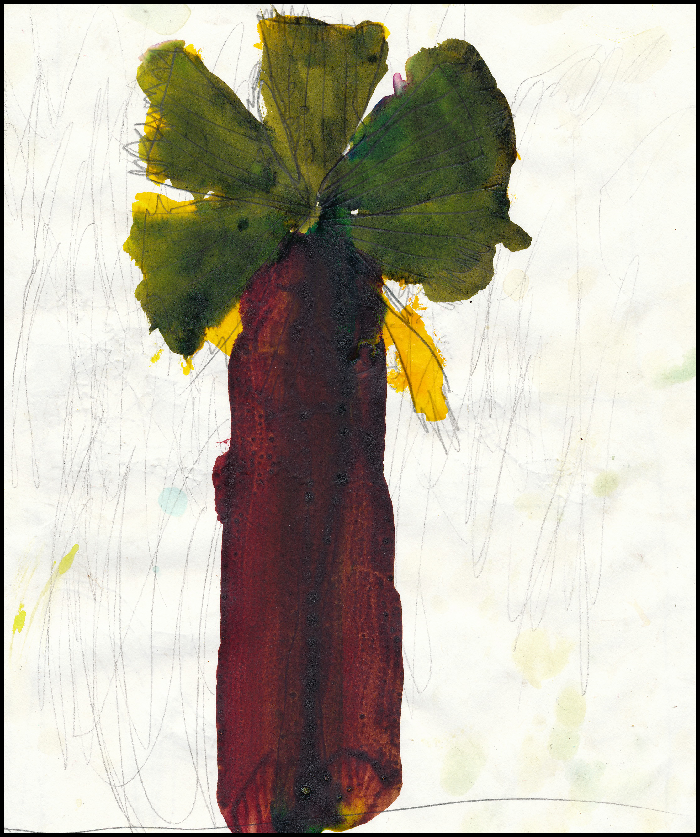
|
| Next he finish a color sketch of the torch ginger. More good color.
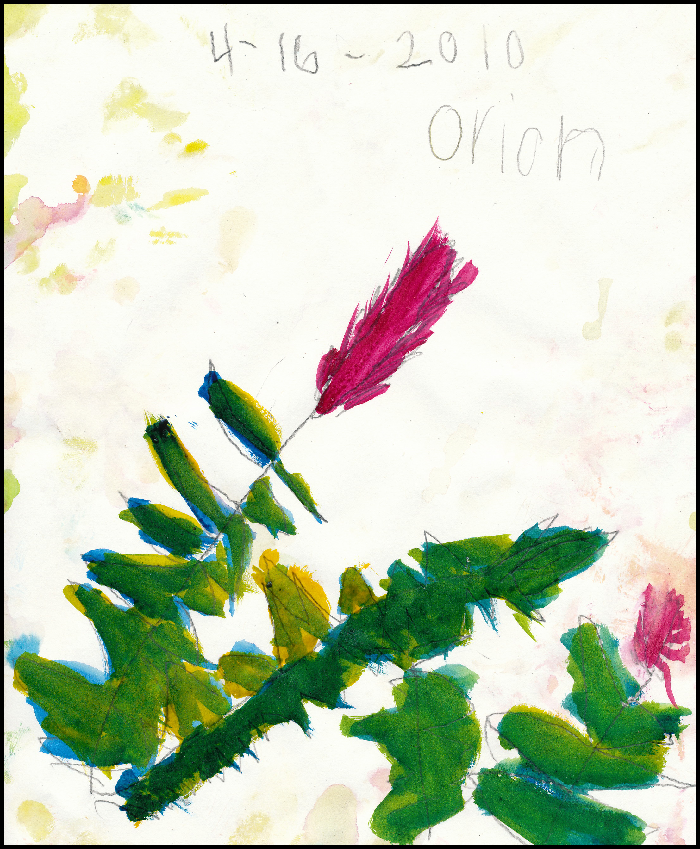
|
| When he was finished with that he moved into the parking lot and painted an iridescent oil spot that got wet in the rain. Nice going Orion!
I should have told him to wet the paper first to get smoother blends and to tint the yellow more with water.
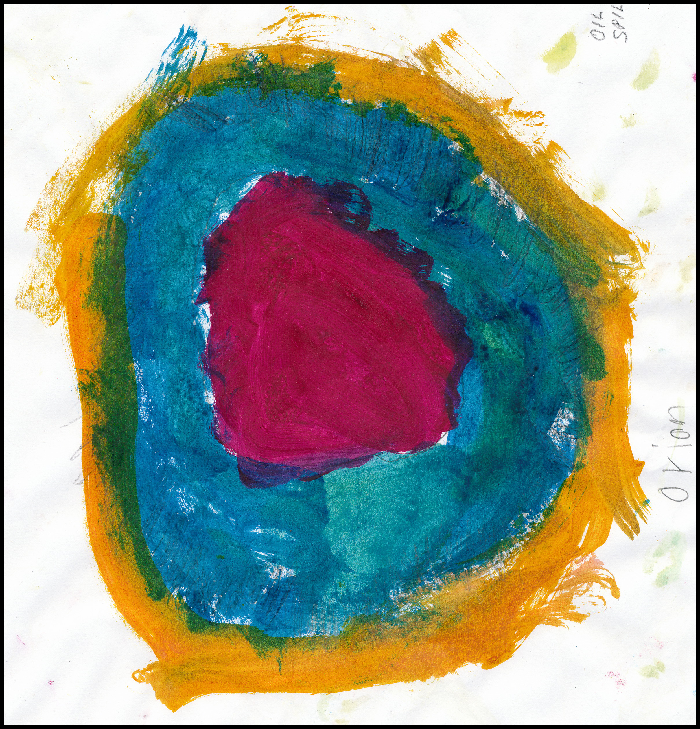
|
| The two girls, Keala and Nalani painted yellow hibiscus flowers, the brushes, pencils and a brass goblet. They understand that it's not so important what you paint as how well you paint it. |
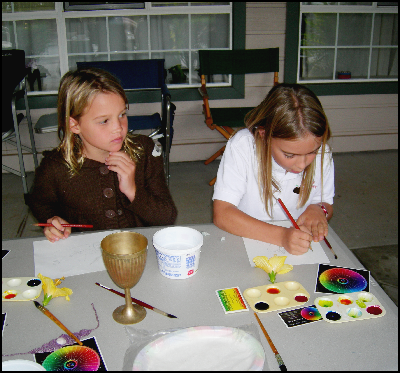
|
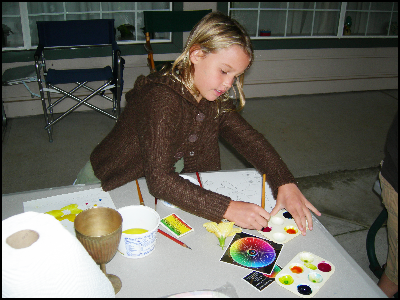
|
| Keala has an incredibly steady hand and drew the objects as she saw each one. No hesitation, single pencil strokes made her flower, five petals with excellent proportion. She saw the foreshortening in the pistil coming toward her. She caught the shape of petals as they flattened out laying on the table in front of her. It's important to notice in her painting that each object has no relationship to the one next to it. She picked an object and drew it in. I know she is going to be great at composition. I noticed she used the full range of the transparent yellow and look at the brown wood on the pencil.
Keala used a pencil (for the gray table) on the table to pick up the texture onto her paper. By the time she got to the bottom of the page she was using the side of her pencil, clever!" |
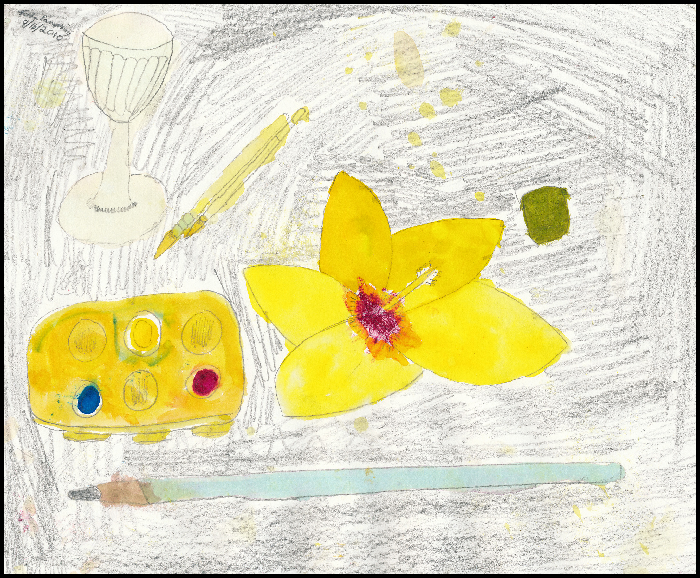
|
Nalani did excellent tight brush work with a large quill brush. I forgot to tell her where to put her painting and she took it home with her. Everyone learned to pull a brush stroke and never push the brush, they learned a dried color won't move when re-wet and how to pre-wet an area to make an even wash.
|
|
Kane painted a cutting board with his snack sitting on it in colored pencil. The first thing he said was, "It (the snack) would look better on wood", so I got him my cutting board.
I have to teach Kane about horizon lines and the horizontal grid lines of a single perspective point, at different hight levels. I'm sure he will understand two and four point perspective and so will the class. He will be able to make his cutting board lay down on it. Two point perspective will show him where the lines down the sides of the board reach to meet the horizon line. He saw the edge of the board and did a really good job on the container. |
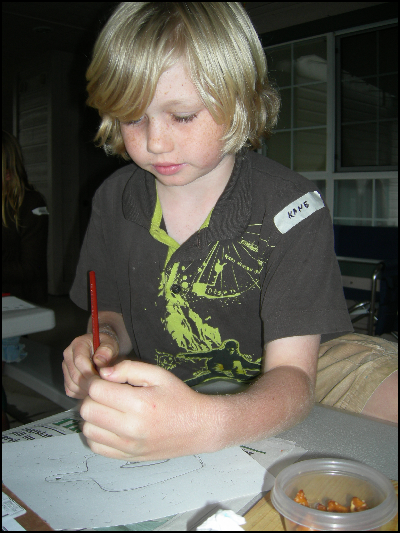
|
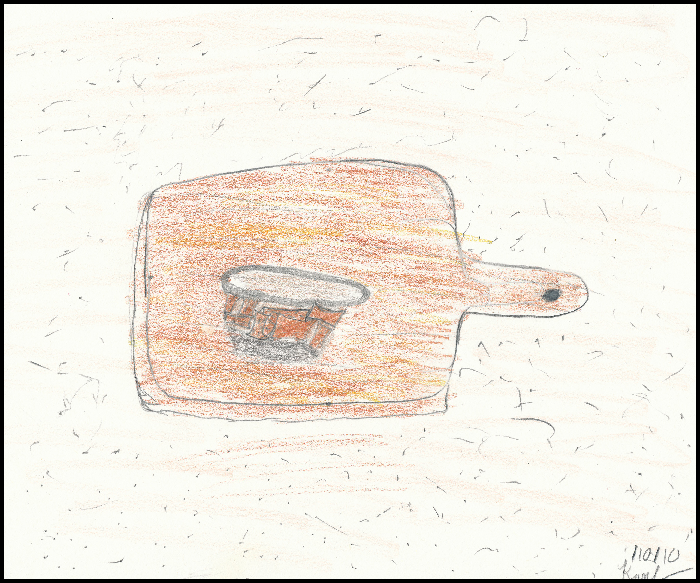
|
|
"Hi class, when you are drawing any symmetrical object like the goblet, draw a line down it's center. That makes it easier for you to make it even on both sides. Also pre-dot your painting for the width and hight of the object."
Orion, pre-wetting the paper isn't just for even large areas of one color, your "Oil Slick" could have used a moist paper to blend your color edges. Everyone used large squirrel/horse haired quill brushes for their water colors. |
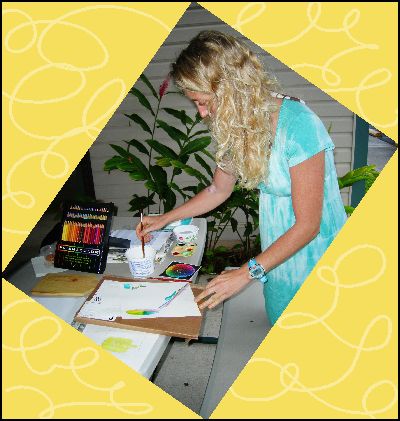
|
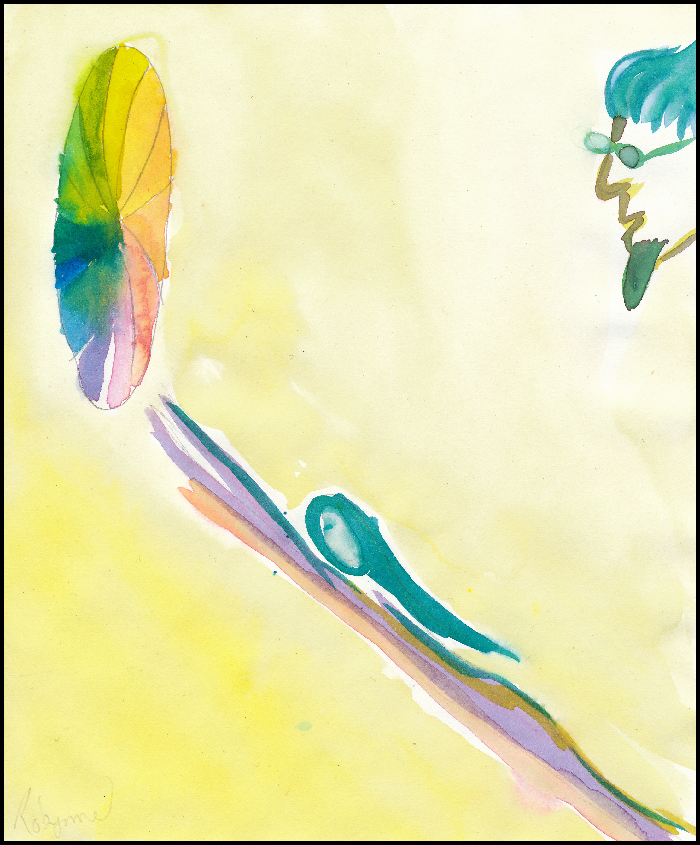
|
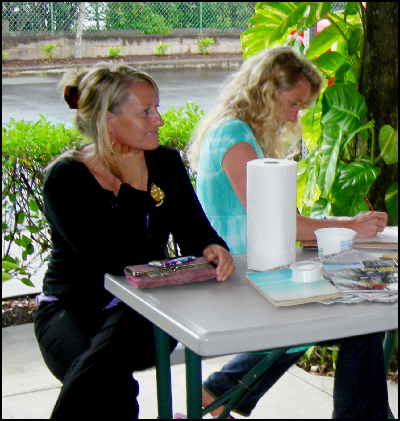
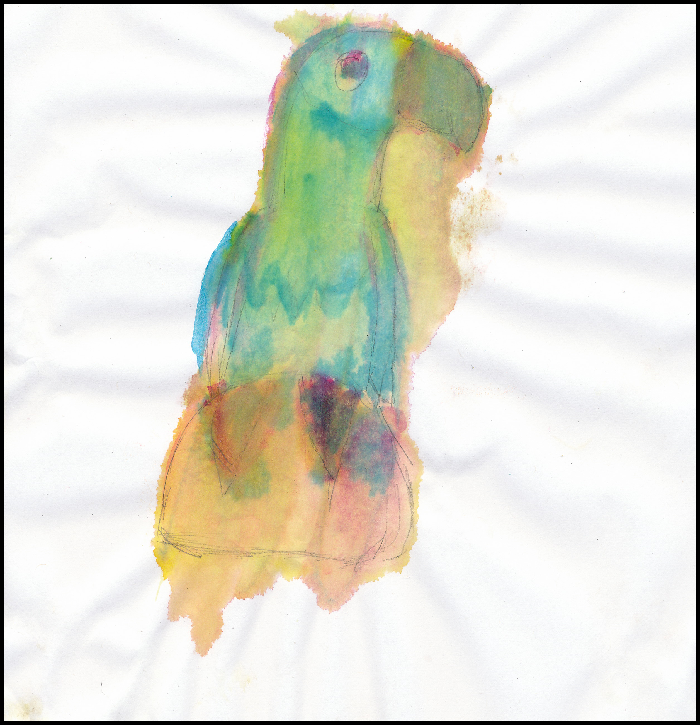
|
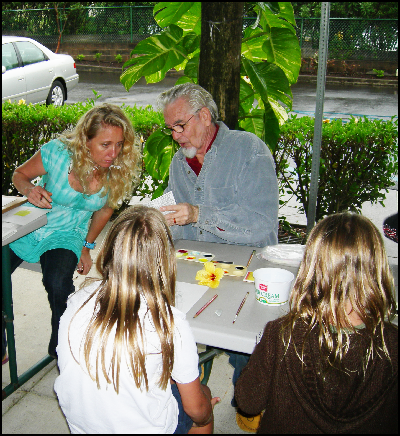
|
I enjoyed every minute of it.
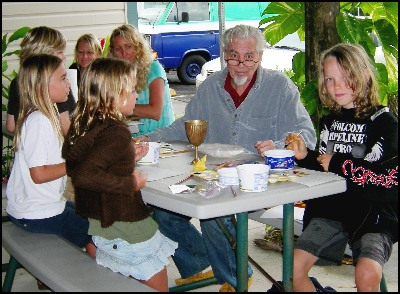
|

|
More 3rd Grade Color Lesson Photos
PREVIOUS PAINTING,
W/C Opera Magenta Painting
NEXT PAINTING,
3 Jacaranda water color paintings using 3 primary pigments.
|
|